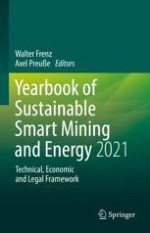This book is at the center of the UN goals of combining environment and economic development with new technologies.First, sustainability in mining is defined as a process of transformation. This is followed by an outlook on the aspects of safety, economy, environmental impact and digital transformation. The book includes a discussion of new aspects such as the problem of liability for mining damages regarding climate change in Peru. Specific technical issues in smart mining are covered as well, such as underground localization systems based on ultra-wide band radio and inertial navigation, or the use of thermal imaging for roof crack detection. In addition, the characterization of material flows, subsurface hydrogen-storage systems and the prediction of mining induced subsidence and uplift are dealt with.The Sustainable Smart Mining and Energy Yearbook is not only aimed at researchers professionals, but at all who want to get an overview of the important technical and legal topics in this field.
